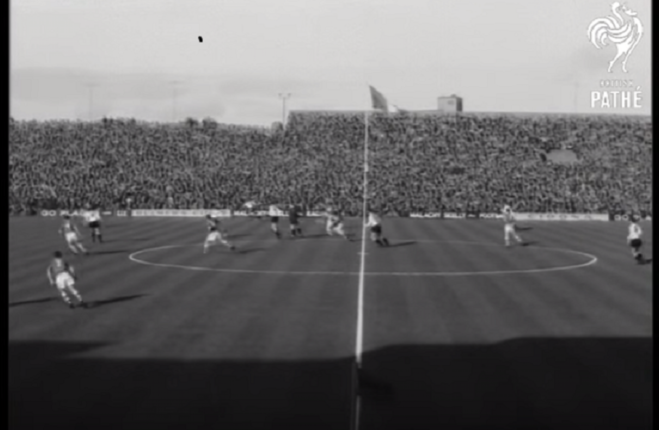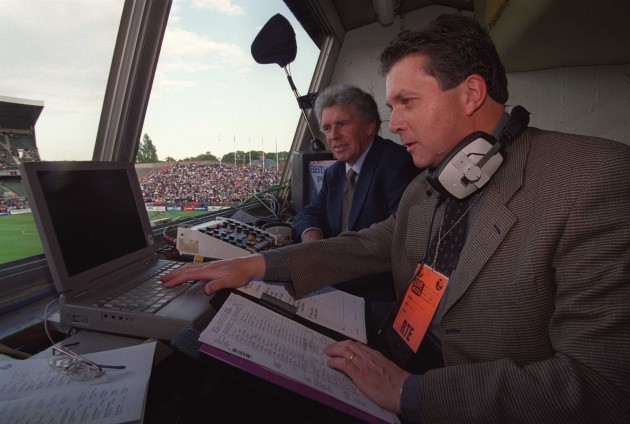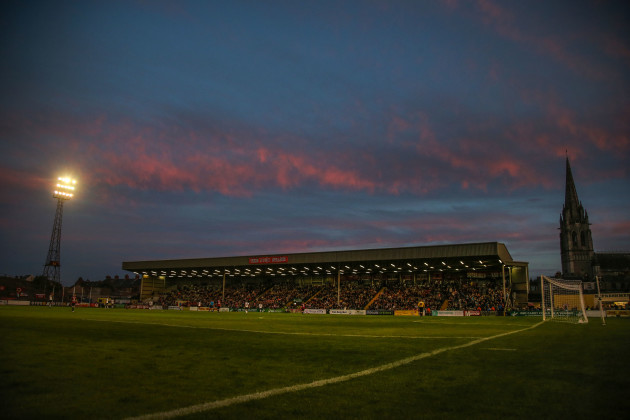Updated:12.43
WHEN JAMES MCCLEAN smashed home a goal early into the second half of Ireland’s World Cup qualifier against Austria last year, it brought a 53-year drought to an end.
Prior to that fixture, the Boys in Green had endured an eight-game winless streak against Austria, with the exact breakdown of the match record reading two draws and six victories in Austria’s favour.
McClean’s strike would later turn out to be the only goal of the night, and in addition to bringing that hoodoo to a close, it ensured that the Republic of Ireland would finish 2016 as Group D leaders.
Understandably, Irish fans were more concerned with the latter consequence of that result, more so than our troubled past with Austria. And victory in the Aviva Stadium this weekend will further strengthen our chances of getting to Russia.
But ending that dismal record was something that was long overdue.
Back In Time
Before that win, Ireland’s most recent competitive victory over Austria dated back to 1963 when the sides met over two legs in the European Championship.
The first fixture is remembered anecdotally as a ‘Miracle Match,’ in which Ireland were forced to field a makeshift team as a result of certain English clubs refusing to release some of their Irish contingent.
Millwall’s Joe Haverty, along with Manchester United’s Tony Dunne and Noel Cantwell, were key players from Ireland’s starting XI who were prohibited from travelling.
According to some preview newspaper reports, Ireland would require a miracle to eek out a respectable result, such was the reduction of power in the team.
Football pundit John Giles, who was a member of that team, has previously written about that two-legged encounter with Austria in ’63.
In his column for the Herald, Giles recalls the selection chaos which was caused by the enforced absence of the three players: ”The selection committee had to scratch around for a squad and picked a mix of very young lads and some who hadn’t played international football for some time.”
Disputes between clubs and national sides over player availability was in a toxic state during that period, as Paul Rouse, UCD lecturer in the School of History, explains.
“The reality of it was that the position of players in the early 1960s in their clubs in England was atrocious,” he tells The42.
Many players were in such a position that what they used to have to do was to take summer jobs during the off season to supplement their income.
“They were on a maximum wage and the clubs were able to hold their contracts. That changed in the 1960s due to the work of Jimmy Hill and the Professional Footabller’s Association, but their situation in many instances was fairly dire.
What made it worse was, if they were released for international duty, it cost them money, because they got a match fee. The players wanted to play for Ireland anyway but it also cost them a match fee, making it doubly difficult.”
He continues: ”The story of club soccer has always been clubs not wanting their players going away to play for their country.
“Almost always that has been a standard thing because, of course, they’re not training when they’re with them (national side) and they might get injured when they’re away.
“There’s nothing in it for the club ordinarily when the clubs go away and you can see it even recently, with the numbers of players who go away for the African Nations Cup during the season.
“Clubs forget the extent to which international football actually brought those players to their attention, so it’s a kind of self-serving argument how they go about it.”
The second leg – Dalymount Park
Despite Ireland’s seemingly depleted state, they were competitive in the first fixture and Giles argues that they could even have stolen an unlikely victory in Vienna, though they ultimately had to settle for a 0-0 draw.
A few weeks later, Ireland hosted the second leg in Dalymount Park, where Cantwell, Dunne and Haverty were free to rejoin the fold.
Cantwell’s performance proved to be particularly crucial, scoring twice to help secure a 3-2 victory for Ireland, and send them through to the quarter-finals of the competition.
It was the visitors who scored the opening goal through Walter Koleznik inside the first 40 minutes.
Cantwell struck back for Ireland five minutes later before the home side edged into the lead on 66 minutes through an own goal.
Austria restored parity eight minutes from the end, but Cantwell would ultimately decide the outcome of the fixture with a penalty in the final moments of normal time.
Some 40,000 people are thought to have attended that game. And considering that today’s Dalymount Park has a capacity of just under 5,000, the stadium at that time was even less equipped to hold such a volume of people.
There were issues with crowd control throughout the tie according to Giles, and officials apparently struggled to stop spectators from encroaching on the pitch.
“I think there were three separate invasions and the final one came at 2-2, when Ireland were awarded a penalty, ” he writes.
Reports claim that stewards and members of the gardai were still trying to control the crowd swells while Cantwell was preparing to take the penalty.
The former United captain, however, was undeterred by the disturbance as he converted the spot-kick.
According to Rouse, crowd chaos was a typical sight in stadiums at this time.
“They would squeeze in in various ways and there were narrow lane ways around it. The atmosphere around Dalymount used to sensational for big matches and you could see the pictures from that era of people absolutely crammed in and an extraordinary around them.”
“It wasn’t built to hold that many people and there was a famous incident in the 1980s when Italy came over to play and everyone spilled out onto the pitch.
“It was very much a make-it-up-as-you-go-along (thing) and they were trying to get as many people in to get as much money out of them. It was dangerous.
“You go to the Aviva now and it’s the standard experience of soccer stadia all across western Europe. It’s very much a packaged and sanitised world.
But this was much rawer, much more basic, much less organised, and I would argue, much better fun.”
The hero of that fixture, of course, was Cantwell, and he would later go on to earn 36 senior international caps in total. In the same year as the Austria victory, he also captained United to an FA Cup title before going on to win league titles in 1965 and 1967.
In addition to thriving as a footballer, Cantwell also achieved five caps as an international cricket player, and was an accomplished rugby player, who won a Munster Junior Cup medal with Cork Con. He died in September 2005 at the age of 73, and a walkway entitled ‘The Noel Cantwell Walk’ was unveiled in his honour two years ago.
The42 is on Instagram! Tap the button below on your phone to follow us!



